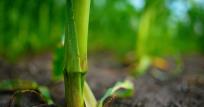

Simulating Bioenergy Potential
Newsletter
It is estimated that 1.4 billion hectares of unused arable land is available for cultivating potential bioenergy sources — crops, forests, residues, and livestock. Identifying and figuring out how to utilise this limited amount of space effectively and efficiently, is one challenge hampering the development of bioenergy production. But a shifting urgency to address climate change, and improved data sharing and analysis, means that the barriers holding bioenergy back, are giving way.
A new IRENA online simulator, developed in partnership with the Masdar Institute of Science and Technology, and Valbiom gives its users the ability to estimate the potential yields of bioenergy produced anywhere in the world, and is now looking to the public to help it validate its data and make it better.
“We’ve created a tool that has no equivalent,” says Nicolas Fichaux, a Senior IRENA Programme Officer for Knowledge. “Using an extensive dataset and IRENA’s powerful Global Atlas platform, we’ve developed the most advanced and comprehensive tool on the market for supporting bioenergy developers.”
The bioenergy simulator relies on publicly available data from the UN’s Food and Agriculture Organization and the World Bank, about land productivity and consumption of households and cars around the world.
“For years, the potential and viability of bioenergy has been an unanswered question, with decision makers hesitant to further develop the sector over a lack of data,” explains Fichaux. “In truth there was both a lack of data, and an inability to access it in an understandable way. IRENA’s analyses show that bioenergy has a significant role to play in all renewable future scenarios, and so we’ve now crunched the numbers and created a tool that can help policy makers and business developers plan bioenergy growth.”
How it works
Though creating the simulator has taken two years and was by no measures easy, using it is simple and intuitive. The simulator consists of four modules, differentiated by the source of the proposed bioenergy. The energy sources include: crops, featuring 16 dedicated bioenergy crops; agricultural residues, including 28 residue types; livestock waste, with 9 different animal manures; and forest plantations, which includes 52 different tree species.
Once a bioenergy source has been chosen, the simulator’s user selects one of 24 different production processes for bioenergy development — covering 6 types of biofuels in liquid, solid, and gaseous states, and 13 types of biofuel conversion technologies.
Finally, three bioenergy outputs allow the user to customise results to show its relevance in local transport, heating, and electricity consumption. Depending on the module selected, metrics like rain conditions, wood density, and crop yields, can be adjusted interactively.
“With so many combinations, it makes it impossible to validate the tool for every region of the world,” says Jacinto Estima, a Programme Officer for Knowledge at IRENA. “We are opening the simulator for open-ended crowdsourcing validation. We invite all users to participate in the validation of the simulator and fill-in the feedback form. We will analyse the feedback and assess the errors and biases of the simulator, in order to continuously improve the results.”
A guidance tool
Based on a user’s geographic scope of investigation, the simulator proposes crops or residues suitable to the local agro-ecological conditions, and identifies key productivity factors.
“The simulator informs its users of potential issues related to bioenergy production, such as population density, protected areas, and water scarcity,” explains Fichaux. Furthermore, the simulator will let you know how bioenergy can be used in the area with a list of potential applications that are country and region specific. “It’s a good start, but for a real project there are more dimensions to look into, which requires ground validation,” Fichaux says.
“The bioenergy simulator contributes in our efforts to advance clean energy projects through data access facilitation,” says Dr Hosni Ghedira, Director of Masdar Institute’s Research Center for Renewable Energy Mapping and Assessment, which worked closely with IRENA in the development of the simulator, and is now hosting and operating it. “Through the development and inclusion of the bioenergy simulator in the Global Atlas platform, we believe the simulator provides invaluable access to potentially transformative data,” says Dr Ghedira.
Though the simulator is complete, it needs the public to help test and improve it. IRENA encourages newsroom readers, particularly those in the energy sector, to try the simulator and fill the feedback form available in the results section. Your feedback can help create a better simulator and potentially assist in the further growth and deployment of bioenergy.
**Update**
A webinar on how to use the bioenergy simulator was conducted on 20 April 2017 and can be viewed in its entirety below.




